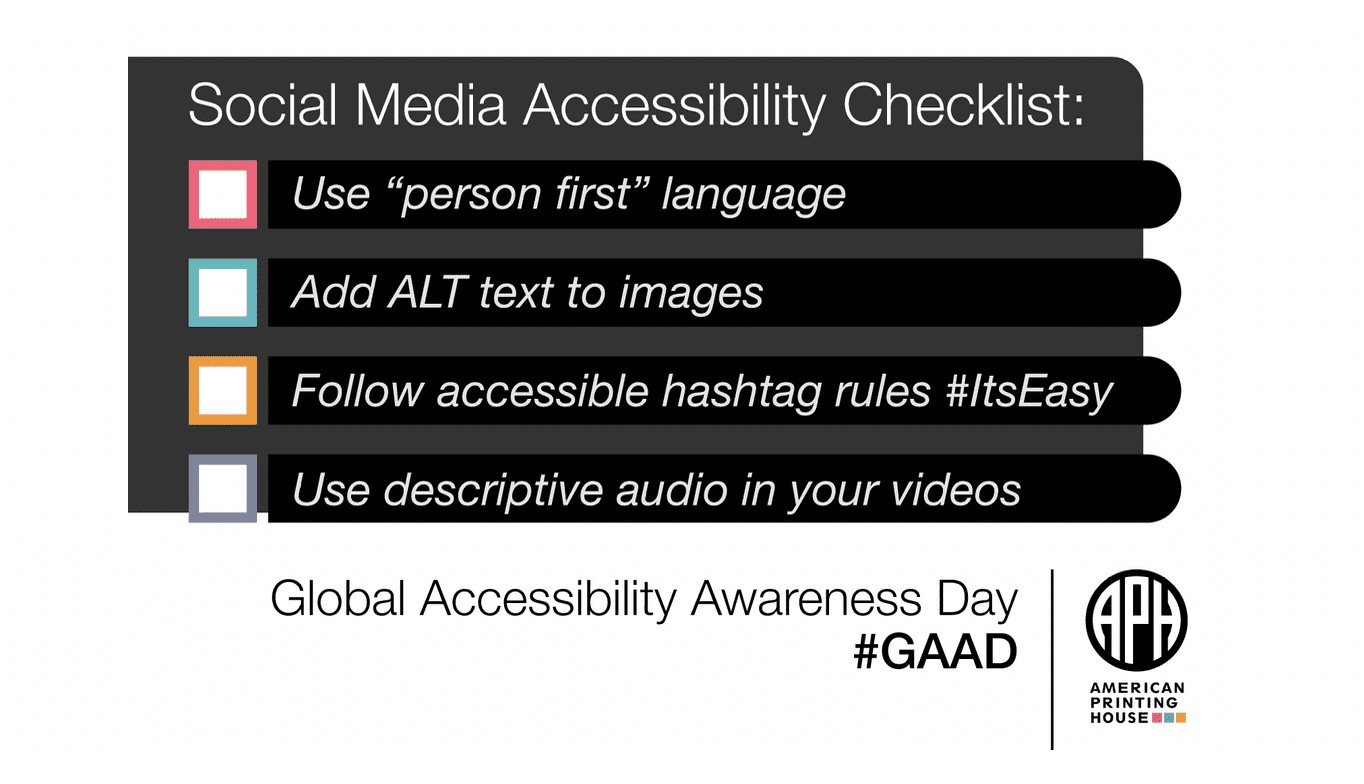Environment: dev.aph.org — Current roles: guest
 Social Media Accessibility Checklist
Social Media Accessibility Checklist
Accessibility matters, even on social media! To celebrate Global Accessibility Awareness Day (#GAAD) we challenge you to make your social media presence engaging and informative for ALL your followers. Use our checklist to make sure everyone can interact with your online posts.
Use “Person-First” Language
Person first language emphasizes the person, not the disability. Rather than saying “the blind woman,” you say “the woman who is blind.” Simple changes in the way we talk about disability can go a long way in changing attitudes about what people with disabilities are capable of.
Use this PDF when writing as a guide to person-first language.
Add ALT Text
Facebook, Twitter, and Instagram have introduced the ability to add custom ALT text to the photos you post. By adding descriptive ALT text to your images you are giving people using screen readers a similar experience to people who are sighted. Plus, ALT text can help elicit the emotion of the image you are using in the way you choose to describe it. Instead of “John playing basketball” it could say “John shooting a basket as the crowd goes wild!”
Here is info on how to add ALT text to each social platform:
Follow Accessible Hashtag Rules
A popular feature on social media is searching by key terms. People do this to find information or join conversations on topics that interest them. By adding a # before a word (or series of words with no spaces), you have just created a tag that can be searched. Some popular hashtag examples include #TBT for “Throwback Thursday,” which encourages people to share old pictures, #OOTD for “outfit of the day,” to show off your style, or #CatsOfInstagram which is pretty self-explanatory. If you’re on Twitter or Instagram, you’re probably familiar with how hashtags work but are you familiar with how to make them accessible?
To start- Instead of replacing words with hashtags, include them at the end of your text so that the screen reader doesn’t have to interpret them within the sentence’s context.
Don’t: Loving my new #OOTD
Do: Loving my new outfit! #OOTD
This helps keep the message clear while still providing a searchable hashtag.
Another great way to make hashtags more accessible is to capitalize the first letter of each word. This will make the hashtags easier to read for your followers who have low vision or use screen readers. So #insteadofwritingyourhashtagslikethis try #WritingThemLikeThisForClarity.
Use Descriptive Audio in Your Videos
Videos are super popular on social media and that shows no sign of stopping. From sharing a funny video of your pet to making “how-to” instructional videos, be sure to describe what is happening on the screen. This adds value for a viewer who is blind. You can use audio descriptions in the video, or add a caption below the video with information to help your followers know what is happening. This is similar to the instructions for ALT text above.
With these tips, you’ll be in great shape to have inclusive social profiles. Happy Global Accessibility Awareness Day, everyone! #GAAD
